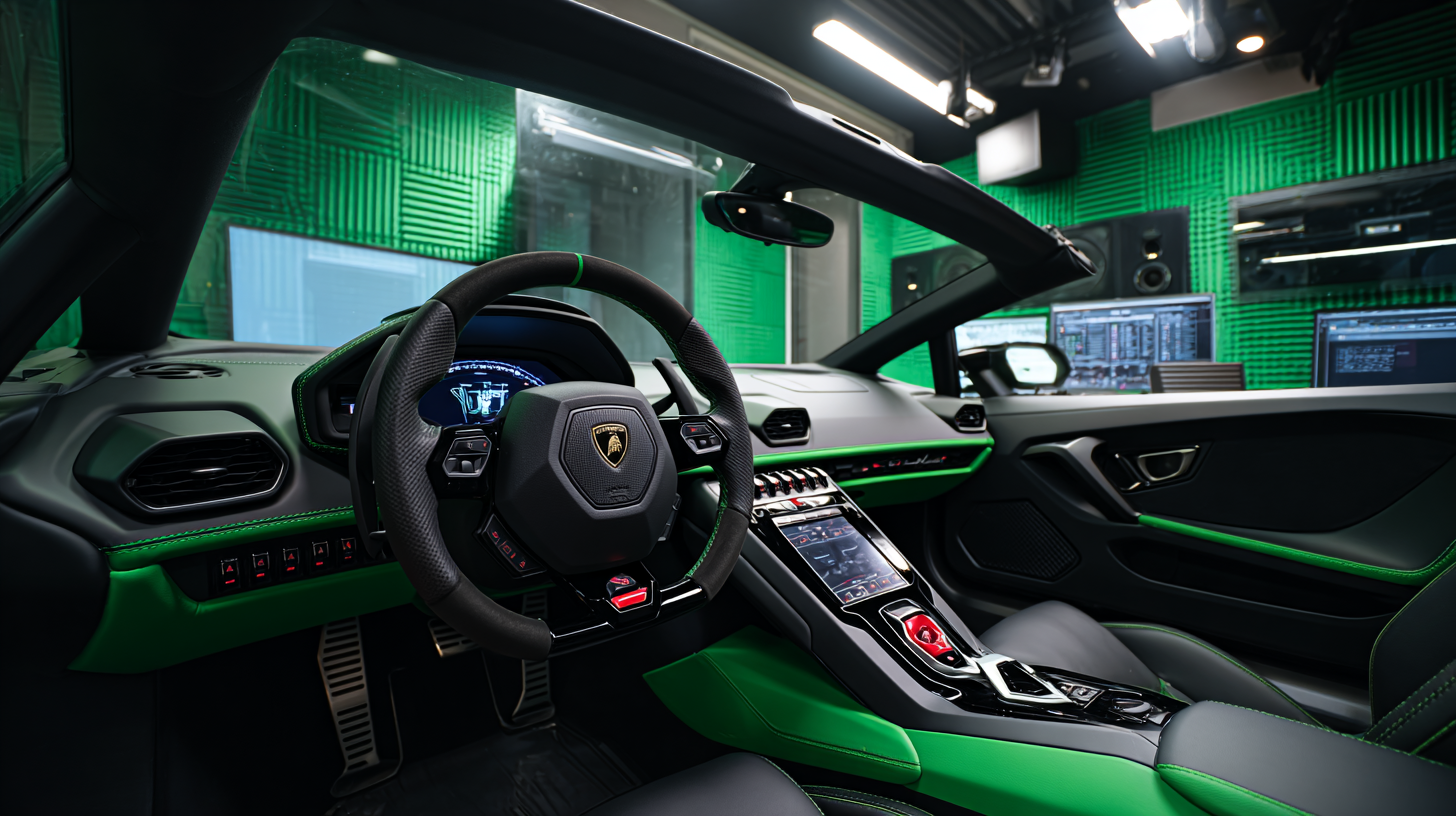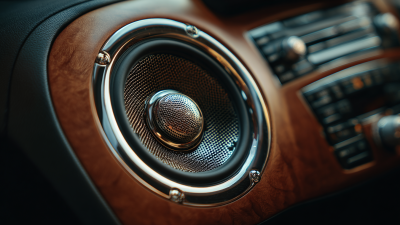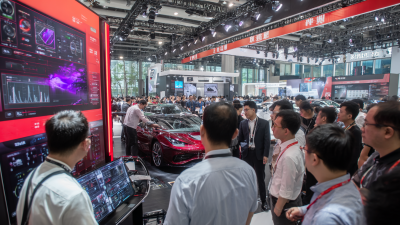Exploring the Science Behind Car Sound and Its Impact on Driving Experience
 Car sound plays a pivotal role in shaping the overall driving experience, influencing not just the enjoyment of the vehicle but also how drivers perceive performance, safety, and even the emotional connection to their car. As we delve into the science behind car sound, we uncover the nuances of how engine noise, tire hum, and interior acoustics can create a symphony or cacophony that affects our comfort and confidence on the road. This exploration reveals that car sound is not merely an auditory phenomenon; it is a complex interplay of engineering and human perception. By understanding the elements that contribute to car sound, drivers can better appreciate their vehicles and make informed decisions that enhance their driving experience.
Car sound plays a pivotal role in shaping the overall driving experience, influencing not just the enjoyment of the vehicle but also how drivers perceive performance, safety, and even the emotional connection to their car. As we delve into the science behind car sound, we uncover the nuances of how engine noise, tire hum, and interior acoustics can create a symphony or cacophony that affects our comfort and confidence on the road. This exploration reveals that car sound is not merely an auditory phenomenon; it is a complex interplay of engineering and human perception. By understanding the elements that contribute to car sound, drivers can better appreciate their vehicles and make informed decisions that enhance their driving experience.
This guide will walk you through the fundamental aspects of car sound, its impact on driving dynamics, and how manufacturers can harness this knowledge to create vehicles that resonate with drivers in thrilling and meaningful ways.
The Physical Properties of Sound in Automotive Design
The physical properties of sound play a pivotal role in automotive design, influencing both the auditory experience and the overall driving environment. Sound waves are characterized by their frequency, amplitude, and waveforms, and these properties are meticulously considered by automotive engineers. For instance, the frequency of sound waves affects how we perceive noises inside the car; lower frequencies can create a sense of power in sports cars, while higher frequencies may evoke luxury in high-end models. The careful tuning of these frequencies allows manufacturers to embody the brand's identity within the sound profile of their vehicles.
In addition to frequency, the amplitude of sound, which relates to loudness, is crucial for passenger comfort. Acoustic insulation materials and sound-dampening technologies are implemented to minimize unwanted noise, enhancing the driving experience. Moreover, sound waves can be engineered to create alerts and notifications that are both non-intrusive and effective, ensuring drivers remain aware of their surroundings without compromising the serene atmosphere within the cabin. The interplay of these physical properties of sound in automotive design ultimately shapes how drivers and passengers engage with their vehicles, transforming mere transportation into a carefully curated auditory journey.
Exploring the Science Behind Car Sound and Its Impact on Driving Experience
| Sound Type | Frequency Range (Hz) | Impact on Driving Experience | Example Source |
|---|---|---|---|
| Engine Noise | 50 - 3000 | Enhances excitement; provides feedback on performance | Combustion Engines |
| Tire Noise | 200 - 2000 | Can be a source of distraction; affects comfort level | Road Contact |
| Wind Noise | 100 - 1000 | Influences interior calmness; critical for luxury vehicles | Aerodynamic Design |
| In-vehicle Audio | 20 - 20000 | Enhances entertainment; influences mood and relaxation | Sound System |
| Alert Sounds | 500 - 4000 | Critical for safety; provides vital notifications | Warning Systems |
The Psychological Effects of Car Noise on Drivers
 Car noise can significantly impact the driving experience, influencing not only comfort but also psychological well-being. In the case of electric vehicles, many passengers report experiencing motion sickness, raising questions about the relationship between sound and mental state. The sudden changes in acceleration and deceleration typical of electric vehicles can overwhelm the vestibular system, leading to discomfort. This highlights the crucial role that sound—or the lack of it—plays in how drivers and passengers perceive motion and stability.
Car noise can significantly impact the driving experience, influencing not only comfort but also psychological well-being. In the case of electric vehicles, many passengers report experiencing motion sickness, raising questions about the relationship between sound and mental state. The sudden changes in acceleration and deceleration typical of electric vehicles can overwhelm the vestibular system, leading to discomfort. This highlights the crucial role that sound—or the lack of it—plays in how drivers and passengers perceive motion and stability.
To enhance the driving experience, consider these tips: First, maintain a steady speed when driving to reduce sudden deceleration and acceleration, which can help mitigate motion sickness. Second, incorporate soft background music that can mask uncomfortable noise levels without distracting the driver. Finally, ensure proper ventilation within the vehicle, as fresh air can alleviate the feelings of nausea that some might associate with the unique soundscape of electric vehicles.
The psychological effects of car noise extend beyond discomfort; they can influence driver alertness and overall satisfaction. As cars become quieter, particularly with the rise of electric options, understanding how the absence of traditional engine sounds affects drivers is essential. Balancing sound for comfort and clarity may provide a safer and more enjoyable driving experience.
The Role of Engine Sound in Performance Perception
The sound of a car’s engine plays a crucial role in shaping a driver’s perception of performance. To many enthusiasts, the auditory feedback from an engine serves as a direct communication line between the vehicle and the driver. For instance, a deep, throaty growl is often associated with power and performance, stirring excitement and confidence. In contrast, a muted or high-pitched whine may evoke feelings of underwhelming capability. This subjective interpretation of sound helps drivers gauge acceleration, speed, and even the overall health of their vehicle, influencing their experience behind the wheel.
Moreover, engine sound can also impact a driver’s emotional connection with the vehicle. Research suggests that pleasing auditory experiences can enhance enjoyment and satisfaction during drives. Automakers are increasingly aware of this and often design engines to produce specific sounds that resonate with target audiences. This engineering of sound not only aims to enhance the performance perception but also contributes to brand identity. Hence, the role of engine sound transcends mere mechanics; it becomes an integral part of the driving experience, influencing not just how a car performs, but how it is perceived and enjoyed by the driver.
Innovative Technologies for Sound Optimization in Vehicles
Innovative technologies are transforming the way sound is perceived and optimized within vehicles. From advanced sound insulation materials to sophisticated acoustic engineering, manufacturers are prioritizing a driving experience that minimizes unwanted noise while enhancing the richness of engine sounds or audio systems. Noise, vibration, and harshness (NVH) management plays a critical role, with designs that utilize lightweight composites and enhanced sealing techniques to create a quieter cabin environment.
Moreover, the integration of digital audio processing technology has revolutionized in-car entertainment. High-fidelity sound systems now employ algorithms that intelligently adjust audio quality based on the driving conditions and cabin acoustics. For instance, adaptive equalization can enhance the listening experience by automatically tuning the sound to counteract background noise from the road or wind. As these innovations continue to evolve, drivers can expect a more immersive auditory experience that complements the thrill of the drive while maintaining comfort and enjoyment.
Environmental Considerations: Noise Pollution and Car Sound Management
 The sound produced by cars is not only a critical factor in the driving experience but also has significant implications for environmental health. Noise pollution generated by vehicle engines, tires, and wind can negatively impact urban environments, affecting both human health and wildlife. As urbanization continues to rise, managing car sound becomes essential to create quieter, more livable spaces. This involves innovative approaches like soundproofing technologies in vehicles and the development of electric vehicles, which are inherently quieter than traditional combustion engines.
The sound produced by cars is not only a critical factor in the driving experience but also has significant implications for environmental health. Noise pollution generated by vehicle engines, tires, and wind can negatively impact urban environments, affecting both human health and wildlife. As urbanization continues to rise, managing car sound becomes essential to create quieter, more livable spaces. This involves innovative approaches like soundproofing technologies in vehicles and the development of electric vehicles, which are inherently quieter than traditional combustion engines.
Tips:
1. When purchasing a vehicle, consider models with lower decibel ratings. These tend to be more environmentally friendly and contribute less to noise pollution.
2. Regular maintenance of your car can help reduce unwanted noise, enhancing your driving experience while also minimizing sound pollution for those around you.
The importance of implementing noise management strategies in urban planning cannot be overstated. Communities can benefit from designated quieter zones where traffic regulations are enforced to minimize sound emissions. Advocacy for improved public transport systems can also reduce vehicle reliance, subsequently decreasing overall noise levels. A comprehensive approach to sound management in the automotive industry and urban development can lead to healthier environments and improved quality of life for all.
Related Posts
-

How to Choose the Perfect Car Speaker: Insights from 2023 Audio Technology Trends
-

Driving Innovation in Car Stereo Installation Trends at the 138th Canton Fair 2025
-

How to Enhance Your Driving Experience with Apple Car Stereo Systems
-

Transforming Car Sound Innovation at the 2025 China 138th Canton Fair
-

Transform Your Nautical Adventures with the Best Marine Audio Systems of 2023
-

7 Simple Tips to Upgrade Your Car Audio System for Ultimate Sound Quality
Footer

Hours
| Sunday | CLOSED | |
| Monday | 9AM-12PM | 1PM-6PM |
| Tuesday | 9AM-12PM | 1PM-6PM |
| Wednesday | 9AM-12PM | 1PM-6PM |
| Thursday | CLOSED | |
| Friday | 9AM-12PM | 1PM-6PM |
| Saturday | 10AM-12PM | 1PM-6PM |
Please note that we are closed for lunch from 12PM-1PM daily.
Contact Us
Leave us a Review!
Our Services
- Car Audio
- Car Alarms
- Mobile Video
- Remote Car Starters
- Navigation Systems
- Backup Camera Installation
- Apple CarPlay Installation
- Android Auto Installation
- Device Integration
- Key Fob Programming
- Interlock Installation
- HID Headlights
- LED Headlights
- Underglow Lighting
- Marine Audio
- Custom Fabrication
- Custom CNC Machining Services
- Mobileye Installation Services



